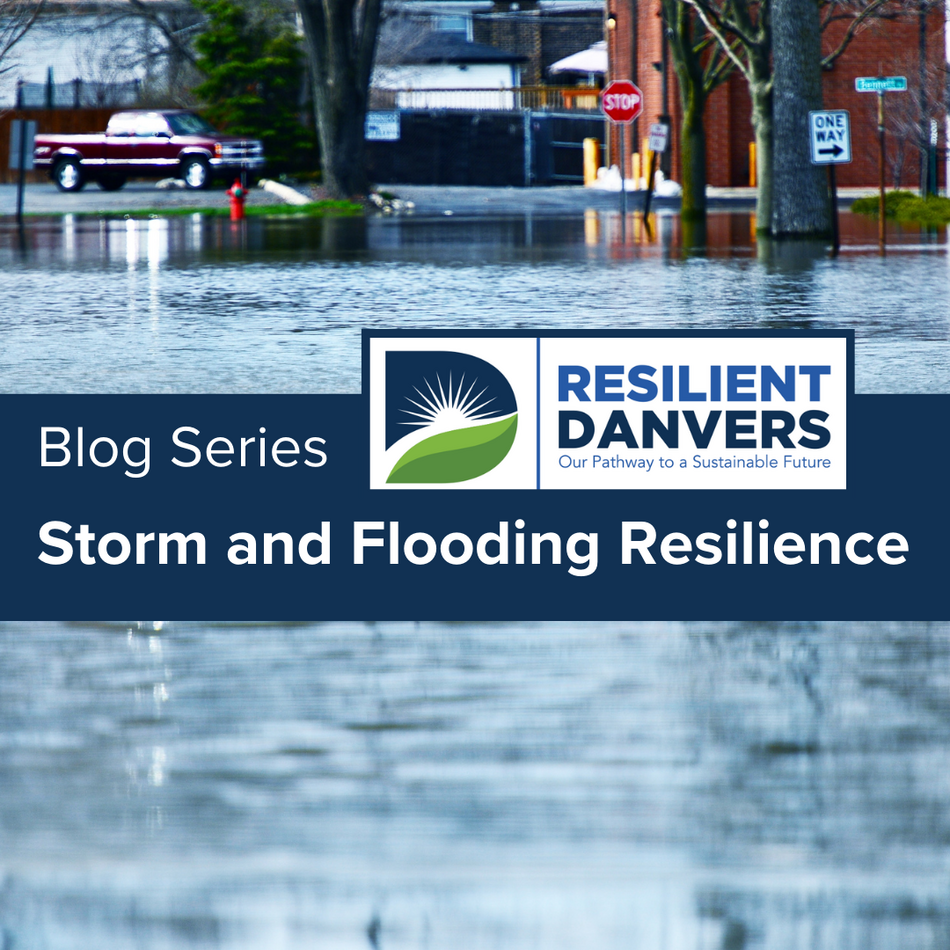Hey Danvers! This month, we are looking at two critical climate hazards that our town and region faces: intense storms and flooding. Read on to look at the data and impacts of these hazards and then learn how you can build resilience to them at home.
Why are storms and flooding important issues in Danvers?

Flooding and intense storms pose a danger to Danvers. Both hazards are projected to increase due to climate change and have led to property and infrastructure damage and power outages. The blizzard of 2013 left nearly 400,000 Massachusetts residents without power and these storms are among the most expensive and disruptive weather events in Massachusetts (Danvers MVP Summary of Findings Report, 2020).
These two issues are magnified when you consider that climate hazards do not impact everyone in the same way. Some groups bear disproportionate impacts, including seniors and unhoused individuals and families. The senior population in Danvers is growing, with the highest relative population increase of any age group. Seniors face potential isolation, lack of access to resources, and the need for more care. 29.2% of seniors in Danvers live alone and are potentially more vulnerable to the impacts of climate change, including the impacts of intense storms and flooding (U.S. Census Bureau, American Community Survey, 2016-2020).
Build resilience at home with these tips

Building resilience to storms and flooding at home is crucial for protecting your property and ensuring safety. Here are five tips:
Elevate Critical Systems
- Raise HVAC units, electrical panels, and water heaters above potential flood levels. Consider installing sump pumps with backup power.
Improve Drainage
- Ensure gutters and downspouts are clear and direct water away from your home’s foundation. Landscaping features like swales or rain gardens can help manage runoff.
Seal and Insulate
- Use water-resistant materials for your home’s foundation and basement. Seal cracks and openings in walls, windows, and doors to prevent water intrusion.
Create a Flood Emergency Plan
- Develop a family emergency plan that includes evacuation routes and communication strategies. Keep an emergency kit ready with essentials like food, water, and first aid supplies.
Sign up for official Danvers emergency alerts through Blackboard Connect.
Create an emergency resilience kit with Ready.gov
Invest in Flood-Resistant Landscaping
- Use native plants and permeable materials in your yard to reduce erosion and promote water absorption. Avoid placing mulch or debris near drainage systems to minimize blockage.
Want to dive deeper? Use FEMA’s Homeowner’s Guide to Retrofitting to learn how to retrofit your house for flood protection from the bottom-up.
Thanks for reading! Learn more about Danvers’ climate resilience initiatives on the Public Health and Safety page.
Previous Post
ONE YEAR of the CASPR Plan!
Next Post
10 Tips for Reducing Waste During the Holiday Season

